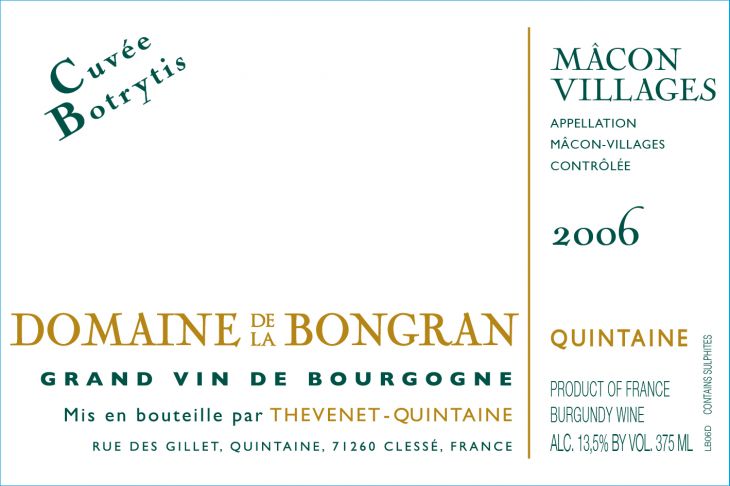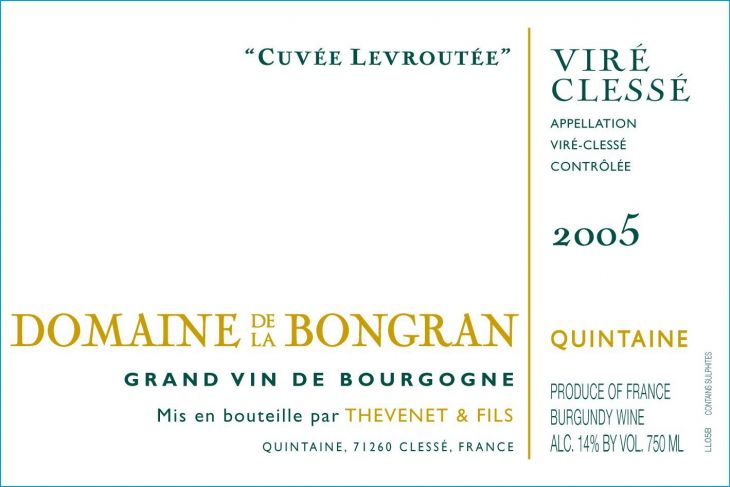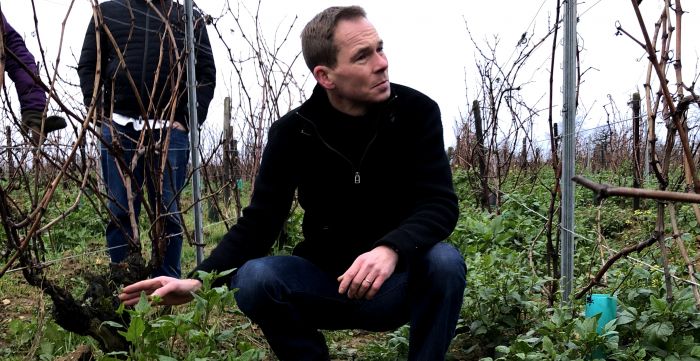
producer profile
31.05.2019
Domaine de Bongran Profile
<p>In today's context, it's hard to imagine terms like "<glossary term="Organic" title="746">organic<font color="#000000"><span style="font-weight: 400;"> </span></font></glossary><glossary term="Viticulture" title="1103">viticulture</glossary>", "<glossary term="-Select term-" title="">minimal intervention</glossary> winemaking" and "<glossary term="Natural WIne" title="708">natural wine</glossary>" didn't always exist. Jean Thévenet, along with the likes of Marcel Lapierre and Pierre Overnoy, are largely credited with the development of these work philosophies throughout France in the early 1980's.</p>
<p>The <glossary term="Estate" title="427">estate</glossary> of <em>Bongran</em> consists of 4,5 <glossary term="Hectare" title="523">hectares</glossary> grown on <glossary term="Clay" title="301">clay</glossary> with white <glossary term="Marl" title="632">marl</glossary> <span class="zalup"><span><glossary term="Subsoil" title="991">subsoils</glossary><span>.</span></span></span> Jean's father originally owned a few <glossary term="Are" title="1208">ares</glossary> in the area; after realizing the <glossary term="Terroir" title="1026">terroir's</glossary> potential, he started buying surrounding <glossary term="Plot" title="1133">plots</glossary> from his neighbors in exchange for flatland, which has long been converted to housing. A single <glossary term="Bottling" title="185">bottling</glossary> of <glossary term="Viré-Clessé" title="1112">Viré-Clessé </glossary> is produced, and is undoubtedly one of the most unique expressions of <glossary term="Chardonnay" title="271">Chardonnay</glossary> being made today. The wine's <glossary term="Spontaneous Fermentation" title="976">natural fermentation</glossary> usually takes close to two years, at which time it is <glossary term="Bottling" title="185">bottled</glossary> and held in the Thévenet's <span class="zalup"><span><glossary term="Cellar" title="254">cellar</glossary><span>,</span></span></span> to be released at their discretion when they feel the time is right. Grapes here <glossary term="Maturation" title="639">mature</glossary> much later than the norm, and produce a wine that is naturally high in alcohol, rich in body, bright in <span class="zalup"><span><glossary term="Minerality" title="662">minerality</glossary><span>,</span></span></span> <glossary term="Acidity" title="71">acidity</glossary> and invariably has traces of <span class="zalup"><span><glossary term="Residual Sugar" title="853">residual sugar</glossary><span>.</span></span></span> This creates incredible food pairings possibilites with richer dishes and cheeses. The wines also <glossary term="Aging" title="74">age</glossary> incredibly.</p>
Article

interview
22.05.2019
An Interview with Jean Thévenet from 2012
<p><strong><em>This interview with Jean Thévenet took place in his </em><glossary title="254"><em>cellar</em></glossary><em> in August, 2012.</em></strong></p>
<p><strong>Tell us about your family history.</strong><br />
<br />
The original name of my family is Gillet, and we have been living in this region since the 15th century. Historically, we have always been <glossary title="1089">vignerons</glossary> and stonemasons, but I only continued one of those traditions! In fact, our family's history as<font color="#7b143e"><b> stonemasons</b></font> ends in the 19th century.<br />
<br />
My father started working in the vines very young, right after the World War 1. Very quickly, he realized that certain <glossary title="1026">terroirs</glossary> produced better wines than others, and he dedicated his life to finding the best our area had to offer. Luckily, they were easy to acquire since the majority of them had been abandoned.<br />
<br />
<strong>Why were they abandoned?</strong><br />
<br />
There are a few key reasons for this: firstly, the land was very hard to cultivate and the vines were low <span class="zalup"><span><glossary title="1129">yielding</glossary><span>.</span></span></span> But it was also a time where wine wasn't selling, as well as the beginning of the <glossary title="252">cave cooperative</glossary> model. This marked a shift in <glossary title="1103">viticultural</glossary> priorities: people stopped producing grapes of quality to favor higher volumes for <glossary title="729">négociants</glossary> and <span class="zalup"><span><glossary title="252">caves coops</glossary><span>.</span></span></span> Good or bad, you were paid by the <span class="zalup"><span><glossary title="524">hectoliter</glossary><span>,</span></span></span> so who could blame them? The same thing is still happening today in many regions of France.<br />
<br />
<strong>You and your son Gauthier produce wine under three different estate names: Bongran, Domaine de Roally and Emilian Gillet. Could you explain each one's origins and differences? </strong><br />
<br />
Everything started with Bongran. These vines have been in the family for a very long time, and there are two possible explanations for the name. My father always believed it to be an abbreviation of 'bon grain' (<em>good grain</em>), a local expression for when a wine is good. But I recently did some genealogical studies, and discovered that a long time ago, a member of my family had sold his vines to a priest called... Bongran! When he died, the vines came back to the family.<br />
<br />
Emillian Gillet is an <glossary term="Estate" title="427">estate</glossary> I founded in 1988 with vines that have always been rented. Legislation is extremely complicated in France, and it was actually easier to create an entirely new, separate <glossary term="Estate" title="427">estate</glossary> than to expand Bongran. And because I didn't want <glossary term="Blend" title="168">blend</glossary> Gillet's <glossary term="Terroir" title="1026">terroirs</glossary> with Bongran's, I decided this was the best solution. The name Gillet is that of my ancestors. <br />
<br />
<strong>And Roally?</strong> <br />
<br />
Domaine de Roally came later. Henri Goyard and I were school-mates. He's a few years older than me and believe it or not, Henri taught me how to tie my shoe laces! It was a good lesson! Anyhow, we were out of touch until 1975, but reconnected when we realized we were both <span class="zalup"><span><glossary term="Vigneron/Vignaiolo" title="1089">vignerons</glossary><span>.</span></span></span> He'd help me <glossary term="Bottling" title="185">bottle</glossary> my wines, I'd lend him equipment, etc... It was always friendly, but we kept it professional; I wouldn't go on vacation with him or anything! Not that we ever go on vacation anyway! But there was a lot of communication, and it was rare if a week went by without us seeing each other. When he decided to retire, my son Gauthier purchased the vineyards and continued producing under the name<font color="#7b143e"><b> Domaine</b></font> de Roally from Henri's vines. <br />
<br />
<strong>Gauthier was mentioning in an earlier conversation that Gillet's terroirs are quite similar to Roally's. Why not combine the two into one estate<span class="zalup"><span><span>?</span></span></span></strong><br />
<br />
In large part because of you guys! Roally already had a great reputation and identity, so we decided to keep the name. However, we sell none of it domestically: everything is shipped to the US and Japan. <br />
<br />
<strong>When and how did you get involved with the family estate<span class="zalup"><span><span>?</span></span></span></strong><br />
<br />
When I was 14, I had to make a choice. I didn't feel like pursuing academics, though in retrospect this can largely be attributed to my dyslexia, a discovery I made much later in life. It makes it near impossible for me to learn a language, and it also means I'm a terrible singer. When I sing to my grandchildren, they are quick to tell me I'm doing it all wrong! <br />
<br />
But I knew I had a job I liked waiting for me at home. At first, this horrified my father, who tried to discourage me! It was a hard way to make a living back then, and we all know how labor and time intensive this line of work is. <br />
<br />
<strong>So you never studied viticulture or oenology in school?</strong><br />
<br />
My father taught me everything I know. He showed me how to spot and appreciate good <span class="zalup"><span><glossary term="Terroir" title="1026">terroir</glossary><span>,</span></span></span> and also taught me his <glossary term="Vinification" title="1104">vinification</glossary> techniques. Nowadays, you can find these in any <glossary term="Enology" title="422">oenology</glossary> book, but back then there weren't any! The methods are the same to this day: we <glossary term="Harvest" title="521">harvest</glossary> ripe grapes, do a <span class="zalup"><span><glossary term="Slow Press" title="964">slow press</glossary><span>,</span></span></span> perform a <glossary term="Débourbage" title="379">débourbage</glossary> and let the wine <glossary term="Fermentation" title="441">ferment</glossary> on its own with <span class="zalup"><span><glossary term="Native Yeast" title="538">indigenous yeasts</glossary><span>.</span></span></span><br />
<br />
I learned everything about being a <glossary term="Vigneron/Vignaiolo" title="1089">vigneron</glossary> in the vines and in the <span class="zalup"><span><glossary term="Cellar" title="254">cellar</glossary><span>.</span></span></span> Granted, I spent time doings internships, for example one in <glossary term="Beaune" title="154">Beaune</glossary> where I learned how to analyze a wine and actually understand the results. But you have to remember that this was a time when most <glossary term="Vigneron/Vignaiolo" title="1089">vignerons</glossary> had no idea what a <glossary term="Malolactic Fermentation" title="622">malolactic fermentation</glossary> was!<br />
<br />
<strong>Were you using chemicals in the vineyard when you first started? </strong><br />
<br />
Yes. But I quickly realized that they were undesirable. The problem with <glossary term="Chemicals" title="279">chemicals</glossary> is that they destabilize a natural environment, which leads to unpredictable outcomes. I was always skeptical of <span class="zalup"><span><glossary term="Herbicide" title="526">herbicides</glossary><span>,</span></span></span> but tried them on a small surface once or twice and confirmed my doubts.<br />
<br />
I persist in my beliefs that one must lean towards the most natural <glossary term="Agriculture" title="78">agricultural</glossary> work possible. But I am not naive, and this year is a good example: a person who used no treatments whatsoever in 2012 would not have a single grape to <span class="zalup"><span><glossary term="Harvest" title="521">harvest</glossary><span>.</span></span></span> However, one can and must treat intelligently, conservatively, use plant treatments... It can be done, but requires a lot of work. <br />
<br />
<strong>You speak of this casually, but it's important to point out that 30 years ago, you and Henri Goyard where the only ones in your region working this way. What was it like back then?</strong><br />
<br />
Here's the thing. If you're doing something one way, you can't get caught up in what others are doing or saying. You have to know what you want, and you have to stay focused. I believe I get better wine by working this way, so I persevere. <br />
<br />
<strong>Bongran is a very unique style of wine, something people might not expect from Southern Burgundy<span class="zalup"><span><span>,</span></span></span> or anywhere for that matter. Thoughts? </strong><br />
<br />
I wish I could say I invented a new style of wine, but I believe that Bongran's characteristics come solely from its <span class="zalup"><span><glossary term="Terroir" title="1026">terroir</glossary><span>.</span></span></span> Man and climate can intervene, but geology is king! Generation after generation of winemakers come and go, but no one forgets the <span class="zalup"><span><glossary term="Terroir" title="1026">terroir</glossary><span>.</span></span></span> My father was wise enough to find this particular <span class="zalup"><span><glossary term="Terroir" title="1026">terroir</glossary><span>,</span></span></span> but also to adapt the <glossary term="Cellar" title="254">cellar</glossary> for the grapes it produced. <br />
<br />
When he first started, the norm was to wash your <glossary term="Manual Press" title="1200">press</glossary> just before <glossary term="Harvest" title="521">harvest</glossary> and right after <span class="zalup"><span><glossary term="Harvest" title="521">harvest</glossary><span>.</span></span></span> That meant that most <glossary term="Wood Press" title="935">wood presses</glossary> smelled like vinegar. One day, my dad said to himself: <em>"Why don't I clean this thing after every single <span class="zalup"><span><glossary term="Pressing" title="827"><em>press</em></glossary><span>?</span></span></span>"</em>. This was back in 1915: cleaning your <glossary term="Wood Press" title="935">press</glossary> meant getting water from the well with a bucket and manually brushing it down. It was a lot of work, but he soon realized that because his <glossary term="Wood Press" title="935">press</glossary> was so clean, there were less contamination problems, meaning he could do a much gentler, delayed <span class="zalup"><span><glossary term="Débourbage" title="379">débourbage</glossary><span>.</span></span></span> <br />
<br />
Another important point to make is that back then, no one knew what a <glossary term="Malolactic Fermentation" title="622">malolactic fermentation</glossary> was. They would obviously occur, but no one took it into account when making their wine. People also made a point of harvesting ripe grapes and <glossary term="Fermentation" title="441">fermenting</glossary> them in smaller <glossary term="Vessel" title="1160">vessels</glossary> (which accelerated the process). Now we have the analysis to guide us in our actions, but the point I'm trying to make is that is was far more common back then for wines to become <glossary term="Oxidation" title="754">oxidized</glossary> in their youth. <br />
<br />
The only thing I improved was <glossary term="Bottling" title="185">bottling</glossary> methods. I learned when to avoid <span class="zalup"><span><glossary term="Oxidation" title="754">oxidation</glossary><span>.</span></span></span> You have to <glossary term="Bottling" title="185">bottle</glossary> wine before it gets too old. You need to get it in bottle while it's still full of life, then let it <glossary term="Aging" title="74">age</glossary> in bottle rather than <span class="zalup"><span><glossary term="Barrel" title="142">barrel</glossary><span>.</span></span></span> This is why Bongran is always released years after it was <span class="zalup"><span><glossary term="Harvest" title="521">harvested</glossary><span>.</span></span></span> <br />
<br />
<strong>What about the wine's residual sugar<span class="zalup"><span><span>?</span></span></span> </strong><br />
<br />
Historically, every good <glossary term="Vintage" title="1109">vintage</glossary> has <span class="zalup"><span><glossary term="Residual Sugar" title="853">RS</glossary><span>.</span></span></span> I remember a tasting I organized for the <glossary term="INAO" title="537">INAO</glossary> 15 years ago (<strong>note:</strong> Jean is specifically referring to a tasting defending natural sugars in his wines, which you can read more about on the <a href="http://louisdressner.com/producers/Roally/">Roally profile</a>). Henri Goyard and a neighbor participated, but I was the only one who had any bottles with significant age on them. We tasted younger <span class="zalup"><span><glossary term="Vintage" title="1109">vintages</glossary><span>,</span></span></span> as well as 1983's, 1989's... I then served a wine blind; a 1937 <em>Bongran</em>. I asked the <glossary term="INAO" title="537">INAO</glossary> panel to guess the <span class="zalup"><span><glossary term="Vintage" title="1109">vintage</glossary><span>,</span></span></span> and they guessed it was from the late 40's/early 50's. Then I blinded them on a 1929, and one of them was convinced it was from 59, an exceptionally rich <span class="zalup"><span><glossary term="Vintage" title="1109">vintage</glossary><span>.</span></span></span> That 1929 was nearly identical to the 1989: 15% alcohol, 10 grams of <span class="zalup"><span><glossary term="Residual Sugar" title="853">RS</glossary><span>,</span></span></span> 3.27 <span class="zalup"><span><glossary term="PH" title="783">PH</glossary><span>.</span></span></span> <br />
<br />
The point is that wines from this <glossary term="Terroir" title="1026">terroir</glossary> always have<span class="zalup"><span> <glossary term="Residual Sugar" title="853">residual sugar</glossary><span>.</span></span></span> But if it's balanced, you don't feel it. Wines that are not <span class="zalup"><span><glossary term="Chaptalisation" title="270">chaptalised</glossary><span>,</span></span></span> that are naturally rich in sugar and where the <glossary term="Fermentation" title="441">fermentation</glossary> was not halted by technology, these are wines that can age incredibly! <br />
<br />
<strong>I want to ask you how you feel about "natural wine". Overnoy, Lapierre and Thévenet are the three big names I always hear come up...</strong><br />
<br />
If you want to talk about the first time the term <em>"</em><glossary term="Natural WIne" title="708">natural wine</glossary><em>"</em> was used, you need to go back to 1910. This was a period when <glossary term="Vigneron/Vignaiolo" title="1089">vignerons</glossary> were having trouble selling their wines because they had to compete with fabricated ones. One was wine made with ripe grapes from a vineyard, the other was made just like beer (and was full of undesirable <glossary term="Chemicals" title="279">chemical</glossary> products). There was this one guy who had a cafe and loved good wine, and he started defending them by selling them as <em>"</em><glossary term="Natural WIne" title="708">natural wines</glossary><em>"</em>. He got into a lot of trouble for this, and eventually went bankrupt. <br />
<br />
Fast forward a few decades, and the world of wine had changed drastically. <span class="zalup"><span><glossary term="Jules Chauvet" title="558">Jules Chauvet</glossary><span>,</span></span></span> whom I had the pleasure of knowing, began leading a fight against <span class="zalup"><span><glossary term="Sulfites" title="993">S02</glossary><span>.</span></span></span> He explained it to me as such: one day, he'd purchased a <glossary term="Moulin-à-Vent" title="691">Moulin-á-Vent</glossary> and noticed a tiny bit of <span class="zalup"><span><glossary term="Hydrogen Sulfide" title="533">hydrogen sulfide</glossary><span>.</span></span></span> He then realized that when you are adding <glossary term="Sulfites" title="993">S02</glossary> to a red wine, you should never do it once the <glossary term="Alcoholic Fermentation" title="87">alcoholic fermentation</glossary> has started, because the <glossary term="Yeast" title="1128">yeasts</glossary> will produce more <glossary term="Hydrogen Sulfide" title="533">hydrogen sulfide</glossary> and it's going to smell like rotten eggs. <br />
<br />
He held on to some of those bottles, only to notice the phenomenon amplify itself in time. This is what inspired <glossary term="Jules Chauvet" title="558">Chauvet</glossary> to make wines with little to no <span class="zalup"><span><glossary term="Sulfites" title="993">SO2</glossary><span>.</span></span></span> This is how he came up with<font color="#7b143e"><b> <glossary term="Carbonic Maceration" title="236">carbonic maceration</glossary></b></font><span class="zalup"><span><span>.</span></span></span> And this was great, since <glossary term="Beaujolais" title="151">Beaujolais</glossary> are wines you drink young. But you need to remember that <glossary term="Sulfites" title="993">sulfur</glossary> in wine sort of plays the role of a police officer in the bottle. If you get rid of an entire police force in a big city, who takes over? History has proven time and time again that chaos ensues. <br />
<br />
It isn't always the case, but without <glossary term="Sulfites" title="993">sulfur</glossary> the bad <glossary term="Yeast" title="1128">yeasts</glossary> and bacteria will take over the wine. Completely eliminating it -particularly with whites- is a very delicate process. An example that comes to mind is a <glossary term="Vigneron/Vignaiolo" title="1089">vigneron</glossary> I know who chose eliminating <glossary term="Sulfites" title="993">sulfur</glossary> from his <glossary term="Barrel" title="142">barrels</glossary> (before adding the wine to <glossary term="Aging" title="74">age</glossary>). As a result, <glossary term="Lees" title="590">lees</glossary> from the previous <glossary term="Vintage" title="1109">vintage</glossary> got stuck in the wood. The result on the next <glossary term="Vintage" title="1109">vintage</glossary> was <glossary term="Brettanomyces" title="195">brett</glossary> and <em>"</em><glossary term="Mouse" title="693"><em>the mouse</em></glossary><em>"</em>. <br />
<br />
Another analogy: if you have a small cut on your hand, putting a little disinfectant on it will help. If you dip your whole hand into it and leave it there, you won't have any skin left! <glossary term="Sulfites" title="993">SO2</glossary> is the same thing: if you NEED to use as much <glossary term="Sulfites" title="993">SO2</glossary> as there is wine, something is very wrong with your wine. Going back to the police metaphor, if a city needed one police officer per citizen, there would be a huge problem with society. <br />
<br />
Just to be clear: I'm just as much against a police state as using too much <glossary term="Sulfites" title="993">sulfur</glossary> in wine! But you need a minimum of <span class="zalup"><span><glossary term="Sulfites" title="993">sulfur</glossary><span>.</span></span></span> <glossary term="Jules Chauvet" title="558">Jules Chauvet</glossary> said it himself! I was speaking to his niece recently (she owns a restaurant in Paris), and she is furious that people tag her uncle's name on beverages that shouldn't even be called wine! <glossary term="Jules Chauvet" title="558">Chauvet</glossary> said you had to limit doses as much as possible, not eliminate it completely.<br />
<br />
<strong>What do you like to drink?</strong><br />
<br />
I like wine that does not taste like mine! I love <glossary term="Alsace" title="95">Alsatian</glossary> <span class="zalup"><span><glossary term="Pinot Gris/Pinot Grigio" title="803">Pinot Gris</glossary><span>.</span></span></span> And the <span class="zalup"><span><glossary term="Loire Valley" title="602">Loire</glossary><span>,</span></span></span> particularly <span class="zalup"><span><glossary term="Sancerre" title="908">Sancerre</glossary><span>.</span></span></span> I love good <span class="zalup"><span><glossary term="Muscadet" title="697">Muscadet</glossary><span>.</span></span></span> I like young <span class="zalup"><span><glossary term="Condrieu" title="326">Condrieu</glossary><span>.</span></span></span></p>
Article

harvest report
02.12.2024
2024 Harvest Report from Gauthier Thevenet
<p>What to say about 2024?</p>
<p>It was a complicated year! After a normal and cold winter, it basically rained the entire Spring! This led to humidity and temperatures high enough to make mildew the most comfortable it can be. In such, and despite constant vigilance on our end, we found ourselves in October already knowing we'd lost 60% of the crop! </p>
<p>That's right: October to harvest. Summer was very short and not enough for us to get optimal maturities quickly. So we had to wait. In the end, it was very late to pick but the maturities were in line with what we usually produce.</p>
<p>It was so much work for so little production! The only thing that conforts me now is that the wines are fermenting easily and seem to have a bright path ahead of them qualitatively...</p>
Article
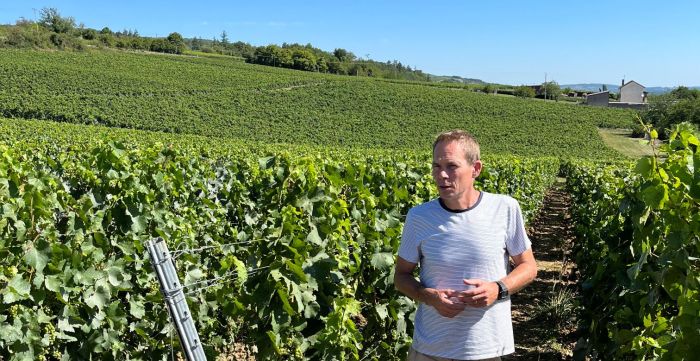
harvest report
27.12.2022
2022 Harvest Report from Gauthier Thevenet
<p>Finally a nice <span class="zalup"><span><glossary term="Vintage" title="1109">vintage</glossary><span>!</span></span></span> Especially after the catastrophic 2021. </p>
<p>We did feel some stress in April, temperatures were flirting with <glossary term="Frost" title="1135">frost</glossary> conditions and we were 1° away from getting hit. The rest of the season was rather favorable and classic despite the incredibly hot and dry summer. This is really where you see that <glossary term="Organic" title="746">organic</glossary> <glossary term="Viticulture" title="1103">viticulture</glossary> has its cards to play: our vines suffered a lot less than our "classic" <glossary term="Conventional Farming" title="331">conventional</glossary> neighbors. </p>
<p>Despite the lack of water, we decided to not rush into <span class="zalup"><span><glossary term="Harvest" title="521">harvesting</glossary><span>.</span></span></span> And it was a good move because we were gifted with rain in early September! We started on September 14th and finished October 30th in perfect conditions. </p>
<p>We are very happy with 2022, the quantity is good and the quality is very satisfying. </p>
<p> </p>
Article
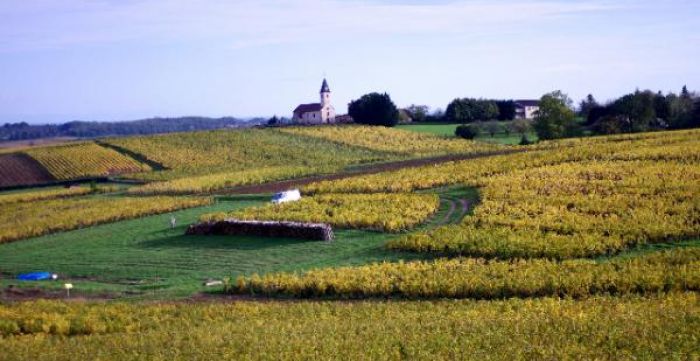
harvest report
26.10.2015
2015 Harvest Report from Gauthier Thévenet
<p>2015 is a very interesting <span class="zalup"><span><glossary term="Vintage" title="1109">vintage</glossary><span>!</span></span></span><br />
<br />
After relatively precocious beginnings, the vines finally found balance with the arrival of the rains!<br />
<br />
We began our <glossary term="Harvest" title="521">harvest</glossary> on October 10th to finish on the 30th.<br />
<br />
We are extremely satisfied with our pickings: the grapes did not end up suffering from the heat wave and the balance in the juices is perfectly normal!<br />
<br />
As always, the <glossary term="Fermentation" title="441">fermentations</glossary> have started very slowly but the aromas are already quite nice in the <span class="zalup"><span><glossary term="Cellar" title="254">cellar</glossary><span>!</span></span></span> We think 2015 will be very promising.</p>
<p><img src="http://louisdressner.com/uploads/images/article/2019_Sep_18//6d/1a/6d1af330bca4f396586f1c6f08f4de51.jpg" /></p>
<p><img src="http://louisdressner.com/uploads/images/article/2019_Sep_18//69/dc/69dc5d42927d0e1c933bdfabcd629a5d.jpg" /></p>
Article
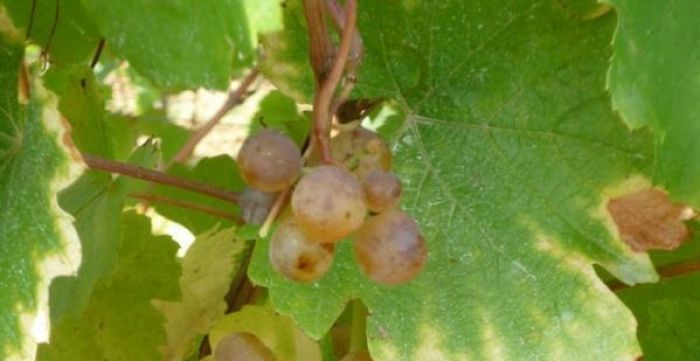
harvest report
30.10.2012
2012 Harvest Report from Gauthier Thévenet
<p><strong>October 30th, 2012:</strong></p>
<p>We started on October 8th for Roally and picked our last grape of Bongran on October 20th. Considering the climatic conditions we endured, we are very happy with this 2012 <span class="zalup"><span><glossary title="1109">vintage</glossary><span>.</span></span></span><br />
<br />
It was wise to wait until early October to start picking, as the rain in late September made the berries quite fragile (making it easier to extract the juice during <glossary title="827">press</glossary>). More importantly, the nice weather following this rain brought the grapes to <glossary title="639">maturity</glossary> levels none of us thought possible! Alcohol will be between 13.8% and 15.5%. Another year where you didn't need to rush!<br />
<br />
Our only complaint is quantity: we estimate having lost between 25 and 35% depending on <span class="zalup"><span><glossary title="760">parcels</glossary><span>,</span></span></span> but once again with a year like this one this was to be expected. In fact, we were anticipating worst! In the end, it will be a great 2012 <span class="zalup"><span><glossary title="1109">vintage</glossary><span>,</span></span></span> but there won't be as much to go around as we'd like.</p>
Article
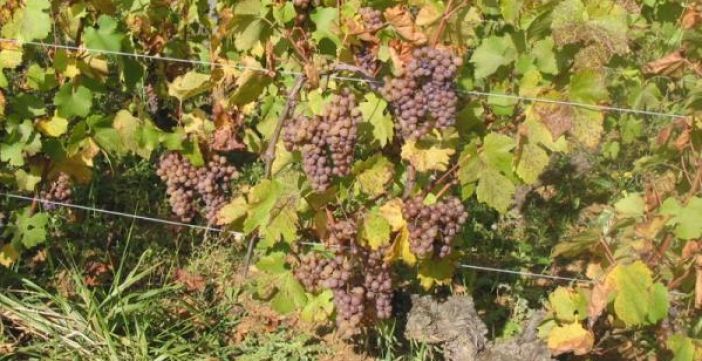
harvest report
07.10.2011
2011 Harvest Report from Gauthier Thévenet
<p><u><strong>October 7th, 2011:</strong></u></p>
<p>Our 2011 <glossary title="521">harvest</glossary> was less premature than we were expecting.<br />
<br />
Though the grapes' <glossary title="639">maturity</glossary> was at a standstill in mid-August, they were so healthy and of high quality that we felt that we could wait a little before picking them.<br />
<br />
After some deliberation, we decided to start the <glossary title="521">harvest</glossary> for Roally on August 26th. We made a wise decision by waiting: September was beautiful and helped the grapes reach the optimal <glossary title="639">maturity</glossary> we were looking for.<br />
<br />
For two weeks we <glossary title="521">harvested</glossary> beautiful, golden colored grapes. The % fluctuates between 13.4 and 14.4, going as high as 15% for Bongran.<br />
<br />
The <glossary term="Acidity" title="71">acidity</glossary> and <glossary term="PH" title="783">PH</glossary> levels are very satisfying; we did some intensive <glossary title="834">pruning</glossary> in the winter which has led to a fine balance in the size of the berries.<br />
<br />
For me this was a very successful <span class="zalup"><span><glossary title="1109">vintage</glossary><span>,</span></span></span> probably comparable to 2005.</p>
Article

harvest report
04.11.2009
2009 Harvest Report from Gauthier Thévenet
<p><u><strong>November 4th, 2009: </strong></u></p>
<p>In 2009, we had a “good” winter, cold and dry; an ideal spring, with a homogenous <glossary term="Flowering" title="1179">flowering</glossary>; and a summer that deserved its name.</p>
<p>In all, the vines’ seasonal cycle benefitted from very favorable conditions this year. As usual, we were meticulous about <span class="zalup"><span><glossary term="Plowing" title="810">plowing</glossary><span>,</span></span></span> but we got some relief from disease, <glossary term="Mildew" title="1137">mildew</glossary> and <span class="zalup"><span><glossary term="Oidium" title="737">oïdium</glossary><span>,</span></span></span> compared with the two previous years. Before the <span class="zalup"><span><glossary term="Harvest" title="521">harvest</glossary><span>,</span></span></span> the grapes were impeccably healthy and it was easy to wait for the best picking time to achieve a balance of ripeness and <span class="zalup"><span><glossary term="Acidity" title="71">acidity</glossary><span>.</span></span></span><br />
<br />
We started our <glossary term="Harvest" title="521">harvest</glossary> on Sept. 23rd, about three weeks earlier than in 2008 and its so-so summer. <glossary term="alcoholic potential" title="1381">Potential alcohol</glossary> is as we expected, between 13.5 to 14%. And, surprise, on our <glossary term="Plot" title="1133">plot</glossary> of Chazelle, the <glossary term="alcoholic potential" title="1381">potential degree</glossary> climbed to 15%.<br />
<br />
The weather was almost summery throughout the <span class="zalup"><span><glossary term="Harvest" title="521">harvest</glossary><span>,</span></span></span> and we ended up with highly concentrated <span class="zalup"><span><glossary term="Must" title="700">musts</glossary><span>,</span></span></span> with great balance. The paradis (new wine partially <glossary term="Fermentation" title="441">fermented</glossary>) is so delicious, we can look forward to a wine of great complexity.<br />
<br />
The <glossary term="Fermentation" title="441">fermentations</glossary> are going without any problem, but because the <glossary term="Must" title="700">must</glossary> is so rich, we expect it to <glossary term="Fermentation" title="441">ferment</glossary> for a long time, the only way to get to a balanced wine.<br />
<br />
This is an exceptional<span class="zalup"><span> <glossary term="Vintage" title="1109">vintage</glossary><span>,</span></span></span> the climactic conditions were almost perfect and the <glossary term="Harvest" title="521">harvest</glossary> ideal. A year of good news, with, on a personal note, the birth of my daughter Ysé, in February.</p>
Article
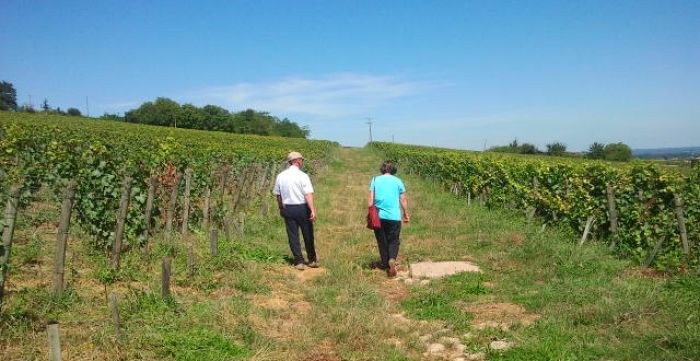
harvest report
05.10.2007
2007 Harvest Report from Gautier Thévenet
<p><u><strong>October 5th, 2007: </strong></u></p>
<p>We just finished picking our last <span class="zalup"><span><glossary term="Plot" title="1133">plots</glossary></span></span> under glorious sunshine.<br />
<br />
We expected a very early <glossary term="Harvest" title="521">harvest</glossary> because of April, which was so unusually sunny and warm that the <glossary term="Flowering" title="1179">flowering</glossary> went fast and early, and the vegetation was several weeks ahead of its normal stage of development.<br />
<br />
But the summer weather was a mixed bag, with low temperatures in July and August that pushed back the beginning of the <span class="zalup"><span><glossary term="Harvest" title="521">harvest</glossary><span>.</span></span></span> We started on 9/20/07, and the weather was great. It had turned really sunny by the end of August into all of September, and this allowed us to pick golden, healthy, ripe grapes, with <glossary term="alcoholic potential" title="1381">potential alcohol</glossary> between 13.2 and 13.9 degrees.<br />
<br />
We had a lot of work all through the growing season, and had to intervene often and to the point to counteract the vagaries of a highly changeable weather. We ended up with high quality grapes.<br />
<br />
This could be a <glossary term="Vintage" title="1109">vintage</glossary> reminiscent of 1990 in its character, at once powerful and elegant.<br />
<br />
Really, we are very happy with the 2007 <span class="zalup"><span><glossary term="Vintage" title="1109">vintage</glossary><span>.</span></span></span></p>
Article
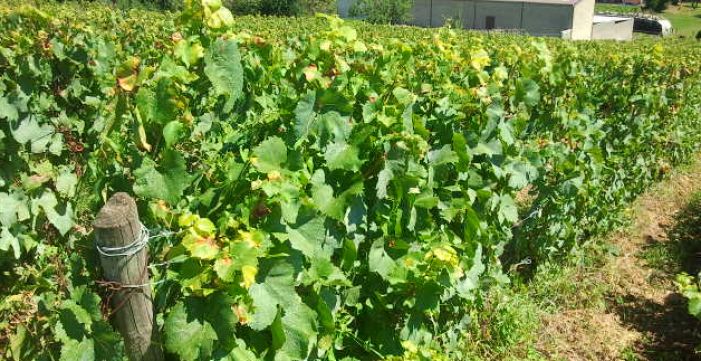
harvest report
18.10.2006
2006 Harvest Report from Gauthier Thévenet
<p><u><strong>October 18th, 2006:</strong></u></p>
<p>The weather was very dry in July, and very chaotic, with several rainy episodes, in August, and a few weeks before the <span class="zalup"><span><glossary title="521">harvest</glossary><span>,</span></span></span> the ripeness was high and the grapes perfectly healthy.<br />
<br />
We started the <glossary title="1133">plots</glossary> of Domaine de Roally on Thurday September 27th, since the grapes already had a <span class="zalup"><span><glossary term="alcoholic potential" title="1381">potential high degree of alcohol</glossary><span>.</span></span></span> The weather conditions stayed extraordinary throughout the picking, and the berries gained in <span class="zalup"><span><glossary title="324">concentration</glossary><span>.</span></span></span> We had to <glossary term="Sorting" title="1380">sort</glossary> severely to preserve the high quality of this <span class="zalup"><span><glossary title="521">harvest</glossary><span>,</span></span></span> and were very exacting in the vines to eliminate the rot that was slowly gaining on the grapes.<br />
<br />
After <span class="zalup"><span><glossary term="Pressing" title="827">pressing</glossary><span>,</span></span></span> the hopes for a well<span class="zalup"><span><span>-</span><glossary title="990">structured</glossary> </span></span><glossary title="1109">vintage</glossary> are confirmed by the very high density of the<font color="#7b143e"><b> <glossary term="Must" title="700">musts</glossary></b></font><span class="zalup"><span><span>.</span></span></span> Alas, the corollary is that <glossary title="1129">yields</glossary> are really minimal, with around 30<glossary title="528">HL/HA</glossary> in <span class="zalup"><span><glossary title="1112">Viré-Clessé</glossary><span>.</span></span></span><br />
<br />
We have done a long <glossary title="379">débourbage</glossary> over four days to keep all the finesse of these very rich<span class="zalup"><span> <glossary title="700">musts</glossary><span>.</span></span></span> The <glossary term="Alcoholic Fermentation" title="87">alcoholic fermentation</glossary> typically took two days to start after <span class="zalup"><span><glossary title="379">débourbage</glossary><span>.</span></span></span><br />
<br />
In short, this 2006 <glossary term="Harvest" title="521">harvest</glossary> looks to be exceptional due to the ripeness of the crop, the wine should be complex with excellent <glossary title="74">aging</glossary> potential.<br />
<br />
M. Henri Goyard, who once again was kind enough to help me through this<span class="zalup"><span> <glossary title="521">harvest</glossary><span>,</span></span></span> says that this is “a year comparable to 1986 in every respect.” (NT: Henri Goyard, previous owner and winemaker of Roally, considers 1986 one of the best <glossary title="1109">vintages</glossary> he ever produced.)</p>
Article
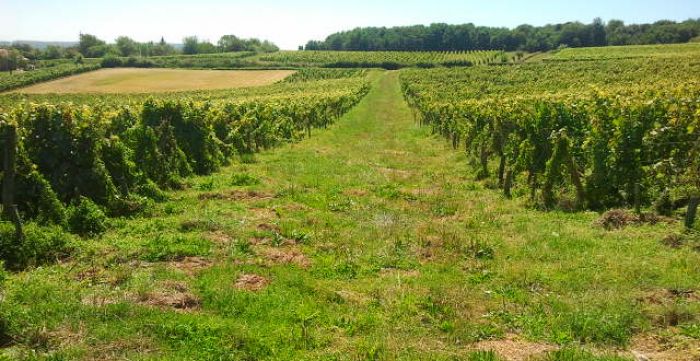
harvest report
17.10.2005
2005 Harvest Report from Gauthier Thévenet
<p><u><strong>October 17th, 2005:</strong></u></p>
<p>We are coming to end of this <glossary title="521">harvest</glossary> with a feeling of great satisfaction. The weather was mild the whole time allowing us to pick the grapes (<glossary term="Hand Harvesting" title="520">still by hand</glossary>) at optimal ripeness.</p>
<p>On average, it looks like the degrees of <glossary term="alcoholic potential" title="1381">potential alcohol</glossary> will be between 13.4 and 14 percent.<br />
<br />
The <glossary title="700">musts</glossary> are very well <glossary title="990">structured</glossary> with complex aromas.<br />
<br />
The balance leads us to predict a great <glossary title="1109">vintage</glossary> along the line of 2000 and 1995, for example.<br />
<br />
Right from the start of <span class="zalup"><span><glossary title="441">fermentation</glossary><span>,</span></span></span> we have been forced to keep the temperatures at between 14 and 16 degrees Celsius in order to conserve all the <glossary title="120">aromatic</glossary> finesse that we foresee.</p>
Article
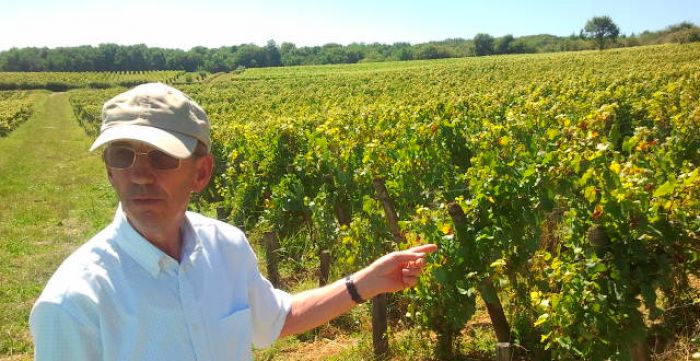
harvest report
01.10.2004
2004 Harvest Report from Gauthier Thévenet
<p><u><strong>October 1st, 2004:</strong></u></p>
<p>Just a few words to let you know about our preparations for the 2004 <span class="zalup"><span><glossary term="Harvest" title="521">harvest</glossary><span>.</span></span></span> The weather conditions in 2004 have been very favorable, giving us reason to hope for a promising <span class="zalup"><span><glossary term="Vintage" title="1109">vintage</glossary><span>.</span></span></span> Mind you, about 65% of the vines in <glossary term="Mâcon-Montbellet" title="1409">Mâcon-Montbellet</glossary> suffered serious damage from <span class="zalup"><span><glossary term="Hail" title="1136">hail</glossary><span>.</span></span></span> But the return of sunny weather and higher temperatures kept the grapes surprisingly healthy.<br />
<br />
The last time we checked, it seemed that we would probably begin around October 10th.<br />
<br />
The grapes are in perfect health and are getting riper every day (it's been very sunny lately). Right now, the degrees of <glossary term="alcoholic potential" title="1381">potential alcohol</glossary> are approaching 12.5-13 degrees.<br />
<br />
I’ll send more information once we get started with the <span class="zalup"><span><glossary term="Harvest" title="521">harvest</glossary><span>.</span></span></span></p>
<p><u><strong>November 6th, 2004:</strong></u></p>
<p>We finished picking in the Domaine de Roally vines on October 18th. We had to do several <glossary term="Pass" title="1144">passes</glossary> because ripeness was really very uneven in some<span class="zalup"><span> <glossary term="Plot" title="1133">plots</glossary><span>,</span></span></span> and this year the rain did not make the <glossary term="Harvest" title="521">harvest</glossary> easy.<br />
<br />
That’s why it took us much longer than planned to pick. Finally, we are satisfied with the results.<br />
<br />
<glossary term="Fermentation" title="441">Fermentations</glossary> started as slowly as possible, at 14 to 16 degrees Celsius (57 to 61 Farenheit), two or three days after<span class="zalup"><span> <glossary term="Débourbage" title="379">débourbage</glossary><span>.</span></span></span><br />
<br />
To sum it up, this was a rather complicated growing season, but in the end we got good <span class="zalup"><span><glossary term="Maturation" title="639">maturity</glossary><span>,</span></span></span> thanks to severe <glossary term="Sorting" title="1380">sorting</glossary> of the grapes.</p>
Article
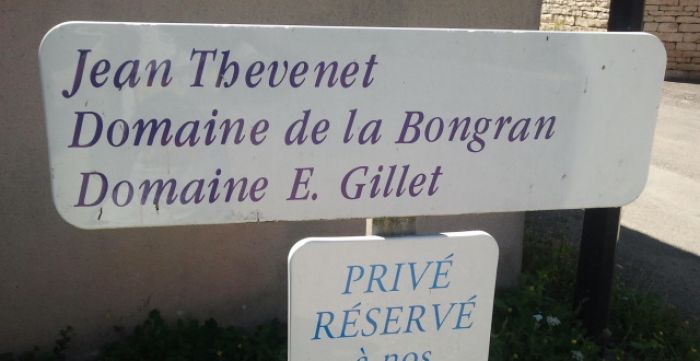
harvest report
19.09.2003
2003 Harvest Report from Gauthier Thévenet
<p><u><strong>September 19th, 2003:</strong></u></p>
<p>This <glossary term="Vintage" title="1109">vintage</glossary> has turned out to be completely satisfactory both in terms of <glossary term="Yield" title="1129">yield</glossary> and quality.<br />
<br />
We finished the <glossary term="Harvest" title="521">harvest</glossary> last Saturday with the last <glossary term="Plot" title="1133">plot</glossary> of still very healthy <glossary term="Young Vines" title="1130">young vines</glossary> and the <glossary term="Fermentation" title="441">fermentations</glossary> are just starting now at an average temperature of 16 C.<br />
<br />
It seems that the <glossary term="Drought" title="1167">drought</glossary> didn’t really harm the grapes, in fact, at the time of harvesting they seem to be almost perfectly balanced.<br />
<br />
<strong>Editor’s Note:</strong> Domaine de Roally is now being run by Gautier Thévenet, Jean Thévenet’s son.</p>
Article

















